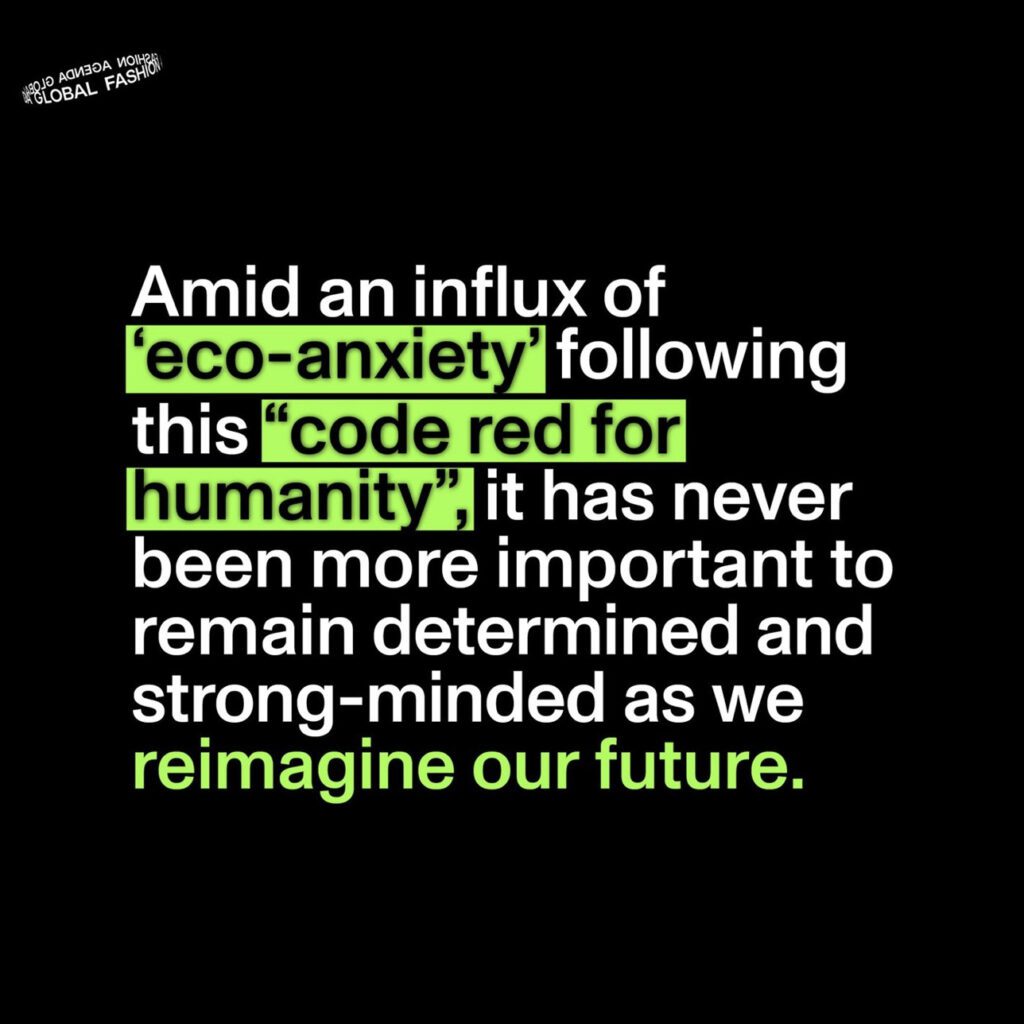Hope and determination in the face of the IPCC Report


A stark warning came last week as the UN’s Intergovernmental Panel on Climate Change (IPCC) released its latest climate change report. Amid an influx of ‘eco-anxiety’ and ‘climate doom’ following this “code red for humanity”, it has never been more important to remain determined and strong-minded as we reimagine our future.
The comprehensive overview provided a reckoning with the fact that some of the damage we have inflicted upon our planet is irreversible, for which human activity is now proven to be responsible. We do, however, have the opportunity to prevent some of the worst-case scenarios laid out in the paper. Crucially, the report warns of a 1.5° Celsius global warming in the next two decades unless we take drastic action.1
Climate change comes with widespread implications beyond the obvious planetary consequences, having a ripple effect on everything from the economy to human health, where the consequences are not felt equally by all. The climate issue is a life issue that has begun to take hold on vulnerable communities globally, calling for immediate and widespread attention.
Despite significant progress made in the fashion industry, it remains a leading cause of greenhouse gas (GHG) emissions. Research shows that the global fashion industry produced around 2.1 billion tonnes of GHG emissions in 2018, equalling 4% of the global total, the equivalent of combined annual GHG emissions from France, Germany and the United Kingdom.2
The fundamental takeaway from the IPCC report is that we must act quickly and meaningfully. We need to abandon the assumption that we have multiple decades to implement changes, but rather, prioritise implementing actionable changes immediately.
Whilst the pursuit of convenience often reigns supreme, we must step out of our comfort zones and flip the script on the prevailing fashion mentality. We can no longer accept hollow commitments speaking to aspirational targets in the distant future.
As aforementioned, the effects of climate change are not borne equally for everyone. A system benefitting some disproportionately at the expense of others is by no means sustainable. Moving forward brands must account for the outsourcing of garments in communities that are already carrying the burdens of climate change at alarming rates.
The industry must now take a holistic approach, whereby brands must focus upon the sustainability of the entire supply chain, as well as the complete lifecycle of products. We cannot afford to ignore the multi-dimensional nature of this issue with narrow approaches. The supply chain remains the most impactful part of the industry,2 and strong partnerships between brands and suppliers will aid the much-needed change in this area. Moreover, the role of policy will become increasingly important to incentivise significant reductions in GHG emissions.
Our Fashion on Climate report is an essential resource for the fashion industry as it outlines areas in which players can focus their efforts to meet climate targets in line with the 1.5° pathway. The report provides a business case demonstrating the industry potential for decarbonisation and concludes that the onus is on fashion leaders to move from a moderate decarbonisation trajectory to a significantly more ambitious one. 2
The Fashion on Climate report covers topics from circular business models and decarbonised material production, to the improved packaging of products and the use of sustainable transport.
The science is clear. Now what?
Eco-anxiety and climate doom can be all-consuming and stifling so we must, therefore, hold on to promise and unite to demand a better future.
From rental to regenerative agriculture, to circular systems and innovative new biomaterials, the opportunities for meaningful change are plentiful. Whilst a full industry transition is no easy feat, it is no longer something we should encourage but rather something we should insist upon. A more prosperous future is possible if we work together.
Challenging as this may sound for businesses, it is encouraging to note that 55% of the efforts outlined in the Fashion on Climate report will actually generate savings on an industrywide basis.2
As climate justice writer and podcast host, Mary Annaïse Heglar, poignantly reminds us: “The thing about climate is that you can either be overwhelmed by the complexity of the problem or fall in love with the creativity of the solutions.”3
Aligning key stakeholders on core priorities to push the industry onto a prosperous trajectory, our Fashion CEO Agenda 2021 is an essential guide for industry leaders. You can download the report below:
Moreover, our digital Innovation Forum connects fashion companies with sustainable solution providers with a mission to drive industry words into viable action.

The industry now has not only a considerable responsibility, but also a remarkable opportunity to subvert the path we currently find ourselves on and ensure an abundant future for both people and planet.
1. IPCC. Climate Change 2021: The Physical Science Basis. 2021
2. Global Fashion Agenda. Fashion on Climate. 2020.
3. Heglar M. Twitter. 2020. Available HERE.